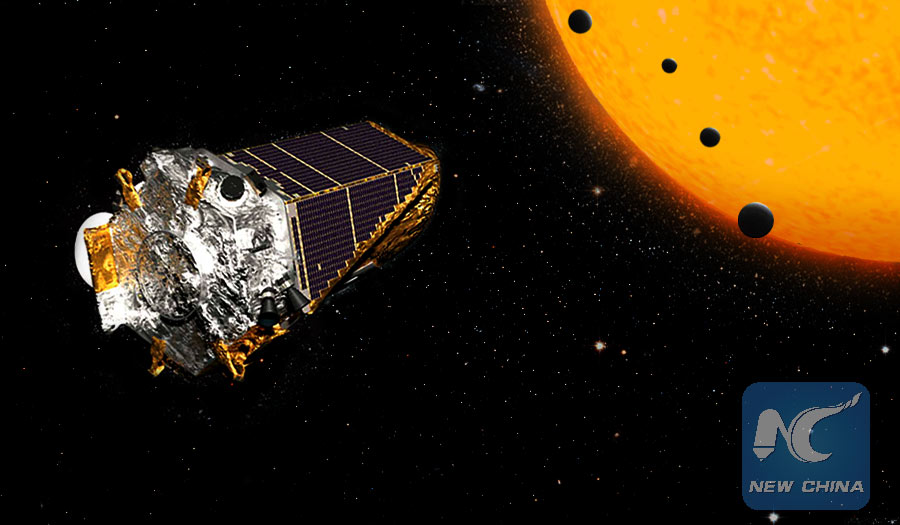
Artist concept. A crop of more than 100 planets, discovered by NASA's Kepler Space Telescope, includes four in Earth's size-range orbiting a single dwarf star. Two of these planets are too hot to support life as we know it, but two are in the star' s "habitable" zone, where liquid water could exist on the surface. Credits: NASA/JPL
WASHINGTON, July 18 (Xinhua) -- An international team of astronomers using the U.S. Kepler telescope announced Monday the discovery of over 100 alien planets, the largest haul obtained since the space observatory transitioned to a different observing mode.
The team observed a total of 197 planet candidates discovered using data from the first year of the Kepler's so-called K2 mission and verified the existence of 104 new planets orbiting stars outside our solar system.
One of the most interesting set of planets discovered is a planetary system comprising four planets potentially similar to Earth, according to the team's paper, which was published online in the Astrophysical Journal Supplement Series.
The four planets, all between 20 and 50 percent larger than Earth by diameter, are orbiting the M dwarf star K2-72, found 181 light years away in the direction of the Aquarius constellation and less than half the size of the sun and less bright.
The planets' orbital periods range from five and a half to 24 days, and two of them may experience irradiation levels from their star comparable to those on Earth.
Despite their tight orbits -- closer than Mercury's orbit around the sun -- the possibility that life could arise on a planet around such a star cannot be ruled out, according to lead author Ian Crossfield of the University of Arizona.
"Because these smaller stars are so common in the Milky Way, it could be that life occurs much more frequently on planets orbiting cool, red stars rather than planets around stars like our Sun," Crossfield said in a statement.
The researchers achieved this extraordinary "roundup" of exoplanets by combining data with follow-up observations by Earth-based telescopes including the North Gemini telescope and the W. M. Keck Observatory in Hawaii.
Launched in March 2009, Kepler is the U.S. space agency NASA's first mission to find potentially habitable Earth-size planets. It does this by measuring the subtle dip in a star's brightness caused by a planet passing in front of its star.
In its initial mission, Kepler surveyed just one patch of sky in the northern hemisphere, measuring the frequency of planets whose size and temperature might be similar to Earth orbiting stars similar to our sun.
In 2013, it lost its ability to precisely stare at its original target area, but continued to find new planets after a fix that created a second life for the telescope, known as the K2 mission.
"Our analysis shows that by the end of the K2 mission, we expect to double or triple the number of relatively small planets orbiting nearby, bright stars," Crossfield said.
"And because these planets orbit brighter stars, we'll be able to more easily study everything possible about them, whether it's measuring their masses ... or measuring their atmospheric makeup."











